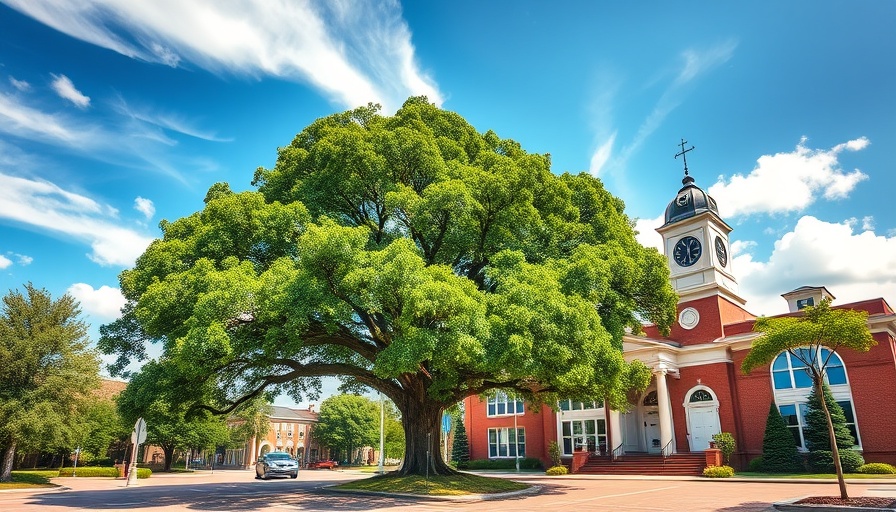
Harnessing Nature: Transforming Urban Spaces
In a recent exploration into urban sustainability, landscape architect Kongjian Yu, FASLA, emphasized the need for a paradigm shift in how cities manage stormwater. Rather than relying on traditional grey infrastructure, Yu advocates for the “sponge city” approach that not only tackles flooding but also enhances biodiversity and the urban landscape. This technique offers a compelling solution as cities strive to adapt to escalating climate challenges.
California's Pioneering Strategy to Safeguard Joshua Trees
California has approved an unprecedented plan to protect its iconic Joshua trees, tapping into both contemporary science and indigenous knowledge. This initiative not only aims to shield the species from climate-induced threats but also introduces a new permitting process that will help regulate development near these crucial ecosystems. While it aims to foster long-term ecological health, some critics argue it could complicate future housing projects, showcasing the complex intersection of environmental stewardship and urban development.
Understanding Carbonsheds: A New Tool for Urban Planning
As urban areas confront mounting environmental pressures, a new concept—"carbonsheds"—is garnering attention. Introduced by Chris Hardy of Sasaki, the idea revolves around localizing carbon emissions management, ensuring that cities adopt thorough practices in emissions reduction. This is essential as it empowers city leaders to have clear strategies for transitioning to carbon neutrality without relying solely on federal measures.
The Invisible Heroes: Mycorrhizal Fungi and Our Ecosystems
The role of mycorrhizal fungi in carbon capture cannot be underestimated. Recent studies reveal that these fungi play a critical role in carbon cycling, with over 13 billion metric tons transferred from plants each year. However, alarming data shows that less than 10% of their biodiversity hotspots are currently protected, underlining the urgent need for attention and action in ecological conservation.
A Stark Reality: The Global Plastics Crisis
Amid environmental challenges, the plastic crisis looms large. According to a report, over 8 billion tons of plastic waste now burden our ecosystems, generating significant health and environmental costs. With merely 10% of this waste recycled, experts emphasize the pressing necessity to reduce plastic production. Tackling this crisis is pivotal in fostering long-term sustainability in landscaping and urban design.
Moving Towards Practical Solutions
The convergence of these topics reveals a compelling narrative: the responsibility of professionals in landscaping and urban design to innovate continuously. By integrating principles of sustainability and ecological health in everyday practices—whether it's through local yard contractors in Muskegon adopting eco-friendly yard services or implementing low-maintenance landscape packages—individuals can actively contribute to larger environmental goals.
Embracing a Sustainable Future in Landscaping
As the environmental landscape evolves, the role of landscapers, architects, developers, and builders must adapt too. From developing tailored turf solutions for residential properties to implementing native planting strategies, there is a clear opportunity for industry professionals to create more vibrant ecosystems while serving community needs. This approach not only enhances the environment but also resonates strongly with clients seeking a balance between functionality and ecological responsibility.
Call to Action: Join the Movement!
As we navigate these pressing issues in climate and biodiversity, it's crucial for professionals in the landscaping field to stay informed and proactive. Consider exploring ways to integrate these innovative practices into your projects. Whether you're a seasoned contractor or just starting your own yard business in Muskegon, there's ample opportunity to contribute to a more sustainable world. Together, we can cultivate a greener future!
 Add Row
Add Row 
 Add
Add 


Write A Comment